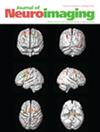Association of Carotid Plaque Calcification Attenuation With Intraplaque Hemorrhage Volume: 3D-Segmentation Analysis
Abstract
Background and Purpose
Despite the high prevalence of plaque calcifications in carotid atherosclerosis, the association between morphologic and attenuation features of calcifications and intraplaque hemorrhage (IPH) remains unclear.
Methods
Calcific carotid plaques were identified on neck computed tomography angiographies (CTAs) from patients meeting criteria for embolic stroke of undetermined source. Plaque calcifications were manually segmented using 3D-Slicer to quantify features, including volume and attenuation (Hounsfield Units [HU]). IPH volume (IPHvol) was quantified using a semi-automated software. A linear mixed regression model evaluated associations between calcification features and IPHvol, adjusting for sex, age, and cardiovascular risk factors. An interaction term between calcification volume and attenuation was included after dichotomizing attenuation (>924HU) and volume (>30 millimeter [mm]3) as high versus low on the basis of median values.
Results
From 70 patients (median age 68 years, 50% female), 116 calcific plaques containing 269 plaque calcifications were analyzed. Adjusting for age, cardiovascular risk factors, and plaque calcification features, being female showed lower IPHvols compared to males (mean ratio 0.34, p = 0.002). A significant interaction between calcification volume and attenuation emerged (p = 0.042). Among plaques with low plaque calcification volumes, plaques with low-attenuation (<924HU) calcifications showed 5.53 times higher IPHvols than plaques with high-attenuation calcifications (p = 0.003). Among plaques with high-attenuation calcifications, plaques with high volumes of these calcifications showed 4.40 times higher IPHvols compared to low-volumes of high-attenuation calcifications (p = 0.011).
Conclusions
Plaque calcification attenuation characteristics are associated with IPHvols. Understanding calcification patterns that correlate with IPH could enable clinicians to infer plaque instability from readily visible calcifications on CTA.

 求助内容:
求助内容: 应助结果提醒方式:
应助结果提醒方式:


